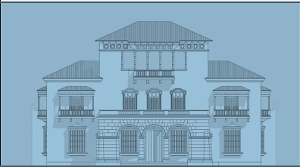Abstract
Coloniality refers to a conjunct of long-term power patterns that emerged during colonialism in the Americas but are kept alive beyond the strict limits of the colonial administrations. These patterns are reflected in the urban-architectural evolution of the postcolonial cities in the 'Global South' when reproducing the architectural, urban and regional models promoted by the countries from the 'global North’. This fact justifies talk of the existence of the 'territorial coloniality', a concept that permits to rethink the urban history. In this sense, the article will explain how it happened in the case of Havana (Cuba) throughout its history.
Apuntes is registered under a Creative Commons Attribution 4.0 International Public License. Thus, this work may be reproduced, distributed, and publicly shared in digital format, as long as the names of the authors and Pontificia Universidad Javeriana are acknowledged. Others are allowed to quote, adapt, transform, auto-archive, republish, and create based on this material, for any purpose (even commercial ones), provided the authorship is duly acknowledged, a link to the original work is provided, and it is specified if changes have been made. Pontificia Universidad Javeriana does not hold the rights of published works and the authors are solely responsible for the contents of their works; they keep the moral, intellectual, privacy, and publicity rights.
Approving the intervention of the work (review, copy-editing, translation, layout) and the following outreach, are granted through an use license and not through an assignment of rights. This means the journal and Pontificia Universidad Javeriana cannot be held responsible for any ethical malpractice by the authors. As a consequence of the protection granted by the use license, the journal is not required to publish recantations or modify information already published, unless the errata stems from the editorial management process. Publishing contents in this journal does not generate royalties for contributors.


